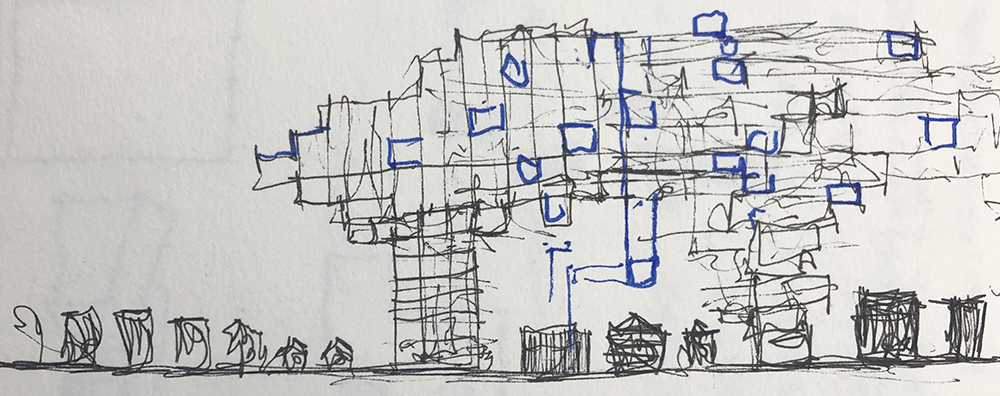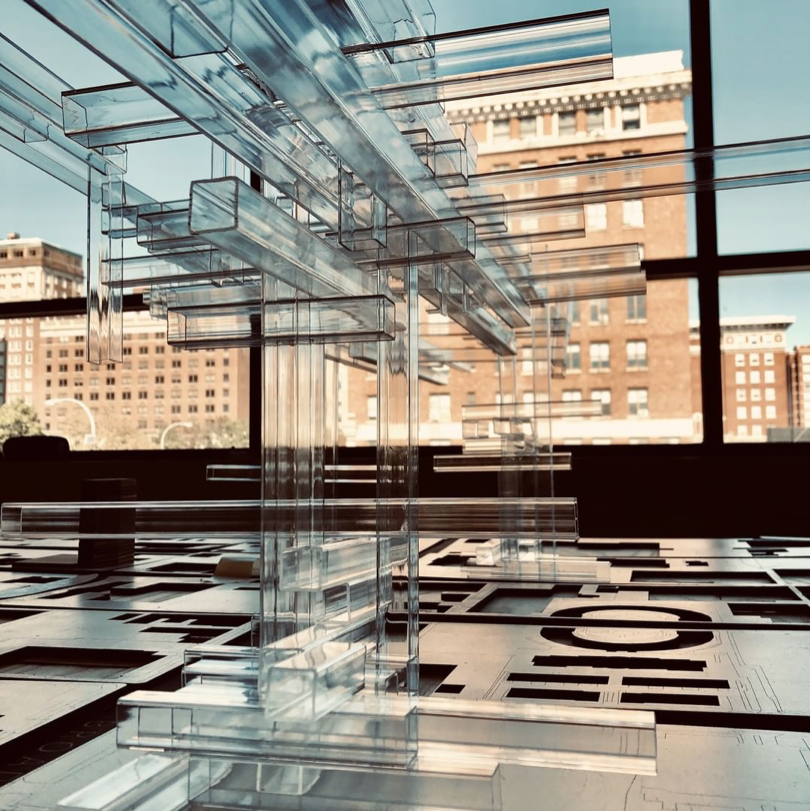Every day we present our clients with answers to their questions. When the American Institute of Architects: CKC invited us to showcase a model at the Speed Art Museum’s October After Hours, we took the opportunity to present some questions of our own.
For starters, how will our city negotiate the future it has in store? Coastlines are receding, fires are raging, and depleted aquifers are turning sprawling desert metropolises into ghost towns. How will a city like Louisville accommodate a massive inland migration of millions of people, all while contending with its own host of problems from flooding to segregation to the urban heat island effect?

In most possible futures, the Louisville we know and accept will change beyond the scope of our current preoccupations with context, scale, and preservation. Signs of protest and pleas for continuity are unlikely to produce solutions. How will we react?
We took our model of SoBro, the little slice of downtown where Luckett & Farley has kept its offices for over 50 years, and let it act as a tool to prompt our thinking. We chose an innocuous and hazy material and began to project a new tier, a new city, on top of the one we know and work in every day.
If you don’t know all of the problems, then the nature of your answers probably needs to change. We liked that we ended up with a model that didn’t force itself as a literal project. Architect Mark Thomas called it a “thought cloud.”
Physical models are a great way to work through ideas and raise new questions at a manageable scale in an environment that fosters innovation. Mark, a part of our Higher Education Design Studio, led the fabrication efforts for this project. As we worked to compile the model in our office, a variety of employee-owners from across disciplines—architecture, interior design, and engineering—passed by. Each new voice raised questions we had not previously thought of. Their input helped us refine our questions and how we were thinking about them and the model.
Will this new city create a new climate for the old city below, feeding and protecting it? Will we need to stay in our structures to avoid the climate outside? What will these buildings have to withstand both from man-made and natural strain? What inequities will these buildings create, perpetuate, or resolve? Could they alleviate the harsh divide in our city, or will they coast indifferently above a planet of growing irrelevance to our way of life?

This explorative model has given us more questions than answers, and that’s ok. There are moments where it’s better to wonder than to rush to answers. These are the concerns we work with, and not just when we have an evening at an art museum. What world are we leaving behind and what world are we subtly projecting? How can we prepare buildings and communities to adapt to a changing reality, all while continuously reacting to and resolving the immediate needs at hand? Can we be a good steward of the resources we have? Can we build a more just world?
Read more about our speculative model here.

